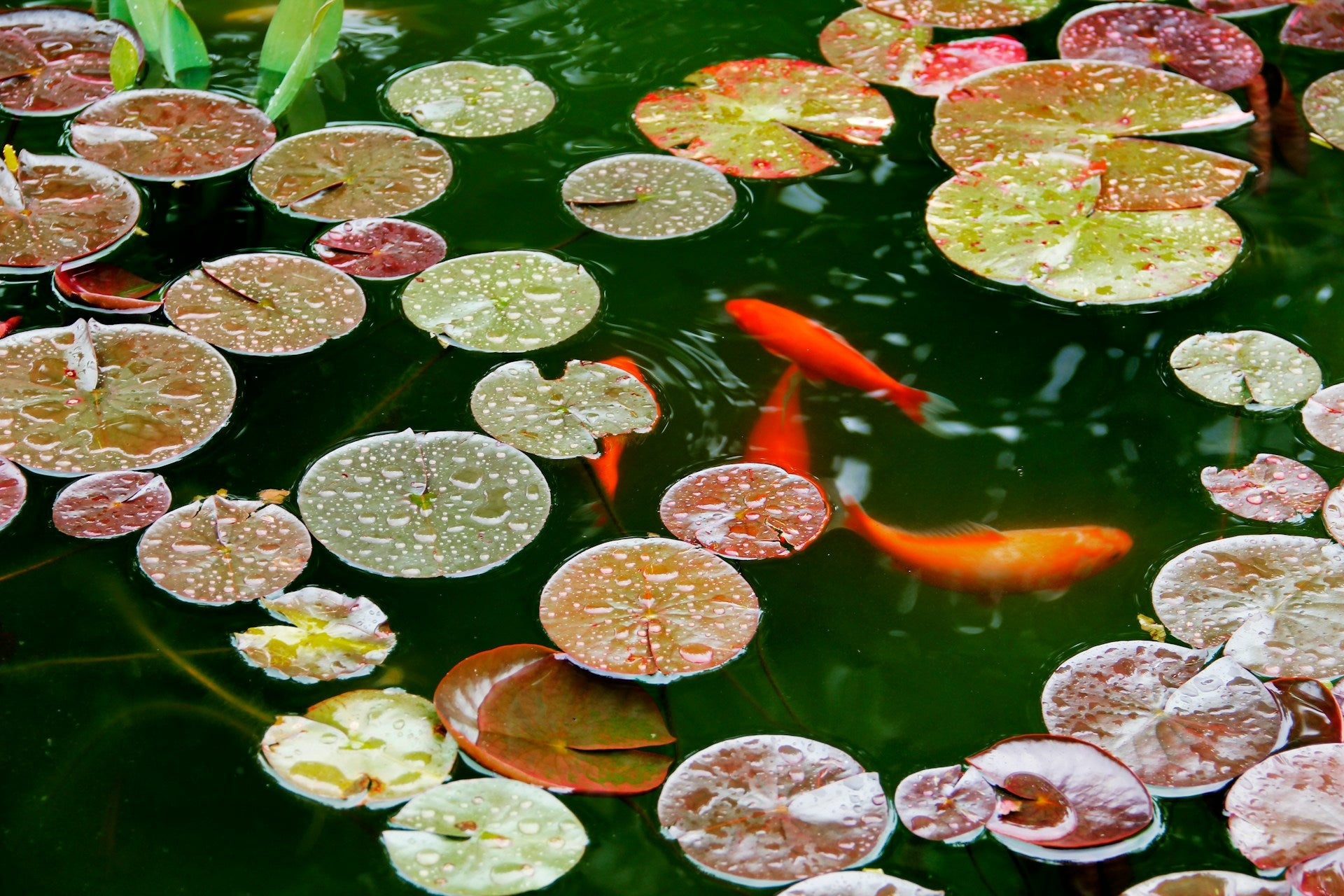Aquatic plants play a pivotal role in enhancing both the visual appeal and biological functioning of your pond or water garden. With their enchanting hues, diverse shapes, and intriguing growth habits, these living treasures transform your pond into an underwater tapestry that exudes grace, harmony, and the soothing essence of nature.
As one of the UK's leading aquatics specialists, we are committed to helping you create an idyllic and thriving pond that reflects your style and vision while catering to your aquatic inhabitants' needs. To guide you through the fascinating world of aquatic plants, we have assembled a comprehensive guide featuring the finest plant selections, care techniques, and the myriad benefits these remarkable organisms provide.
Immerse yourself in a wealth of botanical knowledge as we explore the various plant types suitable for your pond, including floating, submerged, and marginal plants. Learn how to nurture and maintain these living wonders, creating the optimal conditions for their growth and vitality. Discover how aquatic plants not only elevate your pond's visual splendour but also play a crucial role in maintaining water quality, providing natural filtration and refuge for your pond's inhabitants.
Embark on this enchanting quest to create a captivating and biologically diverse pond that nourishes the senses, uplifts the spirit, and instils a deep sense of connection with the vibrant tapestry of life beneath the water's surface. Allow us to be your trusted companion on this rewarding journey as you weave together the beauty, functionality, and joy inherent in an expertly crafted aquatic paradise.
Choosing the Right Types of Aquatic Plants
Selecting the appropriate variety of aquatic plants that cater to your pond's size, inhabitants, and overall theme is the first step to building a thriving ecosystem. Let's explore the three main categories of pond plants:
- Floating Plants: Aesthetic and easy to care for, floating plants are an excellent addition to any pond. Examples include water lilies, water lettuce, and duckweed. These plants offer shade, oxygenation, and a natural haven for fish and other aquatic life.
- Submerged Plants: These plants grow entirely underwater, providing essential oxygen and filtering nutrients. Hornwort, anacharis, and cabomba are popular choices that also offer natural habitats for fish and invertebrates.
- Marginal Plants: Thriving along the pond's edge, marginal plants create a seamless visual transition from the aquatic world to your garden landscape. Consider colourful irises, elegant cattails, or vibrant pickerelweed for a touch of sophistication.
Pond Plant Care Techniques
To maintain the health and vitality of your aquatic plants, follow these care techniques:
- Planting: Ensure your plants are anchored in appropriate pond baskets or pots using nutrient-rich aquatic soil and topped with gravel to prevent clouding.
- Fertilisation: Fertilise your aquatic plants regularly to encourage vibrant growth and beautiful blooms. Follow the manufacturer's instructions for aquatic plant fertilisers, typically applied once per month during the growing season.
- Pruning: Regularly prune dead foliage and spent flowers to maintain your plants' appearance and ensure that decaying matter doesn't compromise water quality.
- Winter Care: Prepare your plants for winter by trimming back hardy species and relocating tropical varieties to indoor aquaria or heated outdoor containers.
The Functional Benefits of Aquatic Plants
In addition to their aesthetic charm, aquatic plants play a vital role in maintaining a healthy and balanced pond ecosystem:
- Water Filtration: Aquatic plants absorb excess nutrients in the water, such as nitrogen and phosphorous, which can reduce algae growth and improve water quality.
- Oxygenation: Through photosynthesis, submerged plants produce oxygen, essential for fish and beneficial bacteria.
- Shelter and Habitat: Plants offer refuge for fish, invertebrates, amphibians, and other pond life, contributing to a diverse and thriving ecosystem.
- Erosion Control: The root systems of marginal plants help stabilise the pond bank, preventing erosion and promoting a well-defined, attractive pond border.
Creating a Visually Stunning Aquatic Plant Display
A beautifully designed pond plant display can transform your water garden into a vibrant and enticing focal point. Consider these design tips for maximum visual impact:
- Plant Selection: Combine floating, submerged, and marginal plants to create a diverse and well-rounded display that also offers distinct functional benefits.
- Colour Coordination: Choose aquatic plants with a harmonious colour palette for a breathtaking visual impact. Consider mixing bold blossoms, such as water lilies, with verdant foliage to create an elegant contrast.
- Height Variation: Utilise plants of varying heights to add depth and interest to your pond display. Marginal plants, such as cattails or irises, can create the perfect backdrop for lower-growing submerged and floating plants.
- Natural Replication: Arrange your aquatic plants in a manner that replicates naturally occurring plant formations to create an authentic, organic feel in your pond.
Conclusion
Through thoughtful selection, care, and design, aquatic plants enhance the beauty and functionality of your pond. These living gems serve not only as captivating visual showcases but also as a vital element in a healthy aquatic environment.
As one of the UK's largest aquatics specialists, we invite you to explore our extensive range of pond plants and accessories that cater to the diverse needs of both amateur and experienced pond enthusiasts. Journey with us through the enchanting world of aquatic plants and design your dream pond habitat that echoes the harmonious melodies of nature's aquatic symphony. Shop online or visit our aquatics store in Henlow today.

